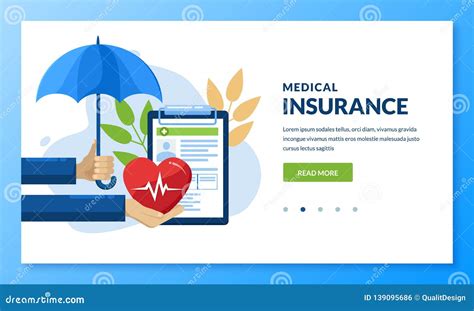Electronic Health Insurance

Electronic Health Insurance (EHI) is a transformative force in the healthcare industry, revolutionizing the way medical services are accessed, administered, and managed. With the advent of digital technologies, EHI systems have emerged as a critical component of modern healthcare infrastructure, offering enhanced efficiency, improved patient experiences, and advanced data-driven insights.
Unraveling the Digital Revolution in Healthcare

The digital transformation of healthcare is an ongoing journey, and EHI systems are at the forefront of this revolution. By digitizing health records, insurance claims, and patient interactions, these systems streamline processes, reduce administrative burdens, and improve overall healthcare delivery.
Digital Health Records: A Cornerstone of EHI
The foundation of EHI lies in the adoption of digital health records. These records, stored securely in electronic systems, offer a comprehensive view of a patient’s medical history, including diagnoses, treatments, and medications. This digital transformation enhances accessibility, ensuring that healthcare providers have immediate access to critical patient information, leading to more accurate diagnoses and personalized treatment plans.
Moreover, digital health records facilitate better coordination among healthcare professionals, especially in complex cases where multiple specialists are involved. This interconnectedness of information ensures that each healthcare provider is well-informed, reducing the risk of medical errors and improving patient outcomes.
Automated Claims Processing: Efficiency Redefined
One of the most significant advantages of EHI is the automation of insurance claims processing. Traditional paper-based claims processes were often cumbersome, time-consuming, and prone to errors. In contrast, EHI systems employ advanced algorithms and digital workflows to streamline claims submission, verification, and reimbursement. This automation significantly reduces administrative overhead, allowing healthcare providers to focus more on patient care and less on paperwork.
| Traditional Claims Processing | EHI Claims Processing |
|---|---|
| Manual data entry, high risk of errors | Digital submission, reduced errors |
| Time-consuming verification processes | Automated verification, faster turnaround |
| Lengthy reimbursement cycles | Streamlined reimbursement, improved cash flow |

The efficiency gains from EHI are not just theoretical; they are reflected in real-world improvements. For instance, a study conducted by the American Medical Association found that healthcare providers using EHI systems experienced a 20% reduction in administrative burden and a 15% increase in productivity, translating to significant cost savings and improved patient satisfaction.
The Patient-Centric Approach: Enhancing Experiences

EHI systems are not just about improving administrative processes; they are also instrumental in enhancing the overall patient experience. By providing patients with secure digital portals, EHI offers a range of self-service capabilities, empowering patients to take control of their healthcare journey.
Empowering Patients: Self-Service Portals
Patient portals associated with EHI systems allow individuals to access their health records, schedule appointments, refill prescriptions, and even communicate securely with their healthcare providers. This level of accessibility and convenience is a game-changer, especially for those with chronic conditions who require regular monitoring and treatment.
For instance, a patient with diabetes can use their EHI portal to monitor their blood sugar levels, receive personalized dietary and exercise recommendations, and track their progress over time. This proactive approach to healthcare not only improves patient engagement but also leads to better health outcomes.
Improved Access and Equity
EHI systems also play a crucial role in improving access to healthcare services, especially in underserved areas. By leveraging digital technologies, healthcare providers can offer remote consultations, telemedicine services, and virtual care, reaching patients who may have difficulty accessing traditional healthcare facilities due to geographical or mobility constraints.
Additionally, EHI systems can facilitate better communication between patients and providers, reducing language barriers and improving cultural sensitivity. This inclusive approach ensures that healthcare services are accessible and understandable to all, regardless of their background or location.
Data-Driven Insights: Unlocking the Power of Information
EHI systems are a treasure trove of data, offering healthcare providers and administrators valuable insights that can drive strategic decisions and improve healthcare delivery.
Advanced Analytics: Unlocking Patterns and Trends
The data collected and stored within EHI systems can be analyzed using advanced analytics tools to identify patterns, trends, and potential areas of improvement. For example, by analyzing large-scale health data, healthcare administrators can identify regions with higher incidences of certain diseases, allowing for more targeted and effective public health interventions.
Furthermore, these analytics can also be used to predict potential health issues based on individual patient data. By analyzing a patient's medical history, lifestyle choices, and genetic factors, EHI systems can provide personalized health recommendations and early warnings, empowering patients to take proactive steps towards better health.
Enhancing Healthcare Quality and Safety
EHI systems also contribute to improving healthcare quality and patient safety. By centralizing patient data, these systems reduce the risk of medical errors caused by incomplete or inaccurate information. Additionally, the real-time nature of EHI ensures that healthcare providers have access to the most up-to-date patient information, leading to more informed and timely decisions.
For instance, EHI systems can alert healthcare providers to potential drug interactions or allergies, ensuring that patients receive safe and effective treatments. This level of vigilance can significantly reduce adverse events and improve patient safety outcomes.
The Future of Electronic Health Insurance
As technology continues to evolve, the potential of EHI systems to transform healthcare delivery is immense. The integration of emerging technologies like blockchain, artificial intelligence, and the Internet of Things (IoT) promises to take EHI to new heights.
Blockchain for Secure and Transparent Records
Blockchain technology, with its decentralized and secure nature, can revolutionize the way health records are stored and shared. By using blockchain, EHI systems can ensure that patient data is tamper-proof, secure, and accessible only to authorized individuals. This enhanced security and transparency can build trust and confidence in the healthcare system.
AI and IoT: Personalized Healthcare at Scale
Artificial intelligence and the Internet of Things have the potential to transform healthcare into a highly personalized and predictive field. AI algorithms can analyze vast amounts of health data to identify patterns and make accurate predictions, while IoT devices can collect real-time health data, allowing for continuous monitoring and early intervention.
For example, AI-powered EHI systems can analyze a patient's genetic data, lifestyle choices, and environmental factors to predict the likelihood of developing certain diseases. Based on these predictions, personalized prevention and treatment plans can be developed, taking healthcare to a new level of precision and effectiveness.
Integrating Telemedicine and Remote Monitoring
The integration of telemedicine and remote monitoring technologies with EHI systems will further enhance the accessibility and efficiency of healthcare services. Patients will be able to receive medical consultations and treatment remotely, reducing the need for in-person visits except for the most critical cases. This integration will not only improve patient convenience but also reduce healthcare costs and resource utilization.
What are the key benefits of Electronic Health Insurance systems for healthcare providers?
+EHI systems offer numerous benefits to healthcare providers, including reduced administrative burdens, improved patient care coordination, enhanced data security, and increased operational efficiency. These systems streamline processes, reduce paperwork, and improve the accuracy and accessibility of patient health information, ultimately leading to better healthcare outcomes and patient satisfaction.
How do EHI systems improve patient experiences and engagement?
+EHI systems empower patients by providing them with secure digital portals that offer self-service capabilities. Patients can access their health records, schedule appointments, and communicate with their healthcare providers conveniently. This level of accessibility and control over their healthcare journey enhances patient engagement and satisfaction, leading to better health outcomes.
What role does data analytics play in Electronic Health Insurance systems?
+Data analytics is a critical component of EHI systems, enabling healthcare providers and administrators to extract valuable insights from the vast amounts of health data collected. These insights can be used to identify patterns, predict potential health issues, improve healthcare delivery, and develop targeted public health interventions. Advanced analytics also contribute to enhancing healthcare quality and patient safety.



